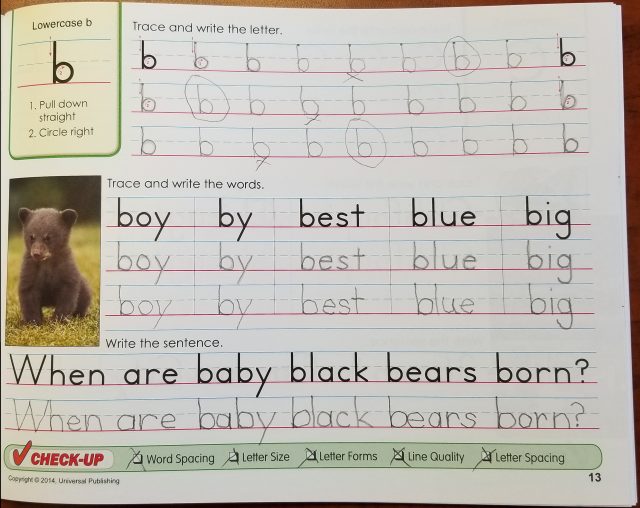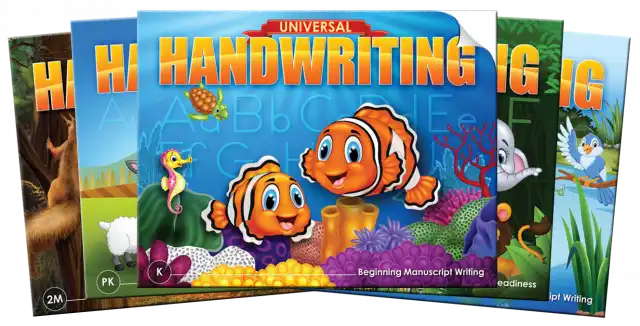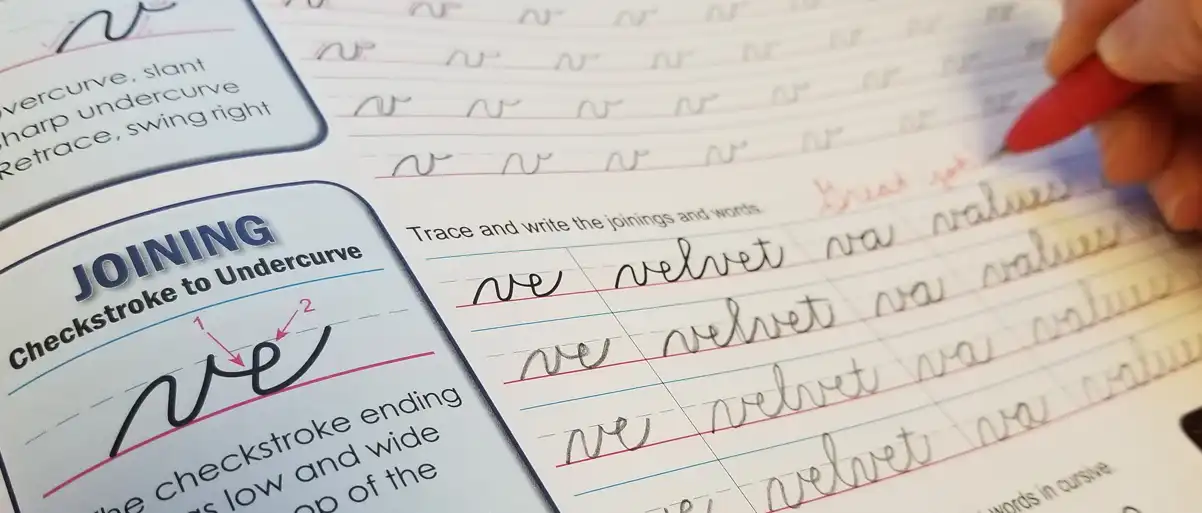
Evaluating Handwriting, Part 2: Student Self-Evaluation
This is the second of two posts about evaluating handwriting. You can find Evaluating Handwriting, Part 1: Teacher Evaluation here.
Student self-evaluation is one of the most important elements of handwriting instruction. When students carefully review their work and identify problem areas, they can immediately self-correct mistakes and avoid the development of bad handwriting habits.
Preparing Students for Self-Evaluation
If you ask your students what they like and don’t like about their work, no doubt they will have a lot to tell you. However, for self-evaluation to be most effective, you should set guidelines for your students to follow as they review their work.
These elements of legibility serve as a great checklist for self-evaluation of letter practice:
- Letter formation. Are the letters formed correctly? Students can look back to the basic strokes to see where they need improvement.
- Alignment. Do the letters touch the writing lines in the correct place?
- Line quality. The weight of students’ writing shouldn’t be too light or too heavy.
- Slant. Manuscript letters should be vertical, with no slant, while cursive letters should slant slightly to the right.
Additionally, your students can use the following elements of legibility when evaluating the words and sentences they write:
- Letter spacing. Letters should be spaced consistently and correctly. Remind students that letter spacing varies depending on the shape of the letters. There is more space between straight-line letters, such as the i or l, than between circular letters like the a or o.
- Word spacing. The space between words should be about the size of a lowercase o. Students can use their finger or a pencil to help maintain consistent word spacing.
- Cursive joinings. Students writing in cursive should be mindful of how letters connect.
Be sure to offer your students plenty of support and feedback on their self-evaluation, especially when they are just beginning. With a bit of guidance and practice, students will learn to automatically review their work and make appropriate corrections based on their observations.
Including Self-Evaluation in Your Handwriting Lessons

Now that you’ve prepared your students to evaluate their handwriting, what’s the best way to include self-evaluation in your handwriting lessons?
After you’ve completed instruction and students are ready to practice, handwriting expert Thomas Wasylyk recommends following these steps for each letter:
- Practice. Have students complete one line of letter practice. Research suggests writing a letter 6-8 times and then pausing for self-evaluation is most effective.
- Review Work. Ask your students to look closely at each of the letters they just wrote. As they evaluate their work, remind them to take notice of basic strokes, alignment, line quality, etc.
- Identify Best and Worst. Students should identify their best letter and circle it. Then, ask them to put an X under the letter that needs the most improvement. (Don’t cross the letter out; students need to be able to see the letter as they wrote it for the next steps.)
- Discuss. Ask students to look at the letters they selected and think about what made them choose those letters. What makes their best letter the best? What needs to be fixed in the letter they put an X under? By discussing the reasoning behind your students’ selections, they will better understand letter formation and improve their subsequent work.
- Plan. Once students identify their problem areas, help them create a plan for self-correction based on their observations. Ask them what they think they should do to avoid the mistake(s) they made and offer suggestions. (For example, adjust pencil pressure/grip to improve line quality, review basic strokes to improve letter formation, etc.)
- Complete the Next Line. Repeat the above steps in the next line(s) of practice. Remind students to think about their best letter in the previous line and strive to repeat it. They should also keep in mind the errors they made and avoid making those mistakes again.
You can apply the same evaluation steps to word and sentence practice; simply include the additional relevant elements of legibility (letter spacing for words and word spacing for sentences; joinings for cursive words).
Student self-evaluation should be part of every handwriting lesson! Help your students master this important skill by teaching them how to critically evaluate their own work.




